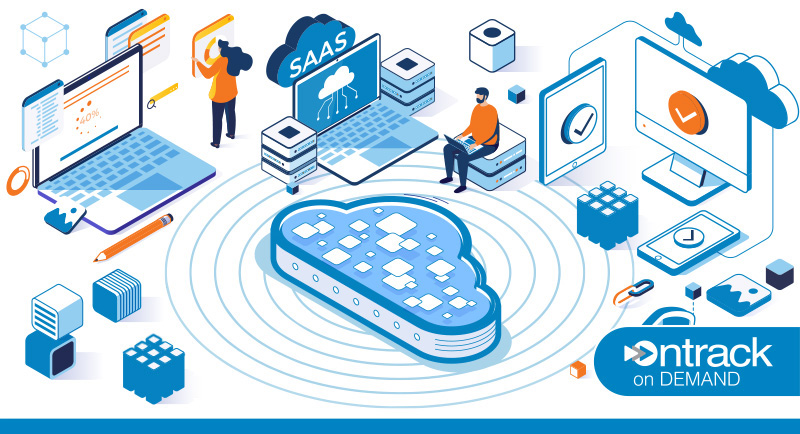As we move into 2025, the Software as a Service (SaaS) industry continues to evolve at a rapid pace. The demands of businesses, advancements in technology, and changes in user expectations are driving innovation in the SaaS space. Here’s a look at some of the key SaaS trends to watch for in 2025:
1. AI-Powered SaaS Solutions
Artificial Intelligence (AI) and Machine Learning (ML) will continue to play a dominant role in SaaS products. Expect SaaS solutions to become more intelligent, offering features like predictive analytics, automated workflows, personalized recommendations, and enhanced customer support. AI integration will help businesses make data-driven decisions, increase efficiency, and improve user experiences.
Why it matters: AI-driven automation can significantly reduce manual work, improve decision-making, and optimize customer interactions.
2. Hyper-Personalization and Customization
Customers today expect highly personalized experiences, and SaaS providers are increasingly tailoring their platforms to meet these demands. From customizable dashboards to AI-based feature recommendations, SaaS products will allow users to adjust interfaces and functionalities to fit their unique needs.
Why it matters: By offering more tailored experiences, SaaS companies can improve user satisfaction and increase retention rates.
3. SaaS Integration Ecosystems
The ability to seamlessly integrate with a wide variety of other software tools will become a more critical component of SaaS offerings. In 2025, SaaS platforms will be part of increasingly interconnected ecosystems, allowing businesses to create fluid workflows across multiple apps. API-first development will enable companies to easily link various solutions and centralize their operations.
Why it matters: Businesses prefer integrated solutions that allow them to streamline processes and improve operational efficiency.
4. Vertical SaaS Solutions
While horizontal SaaS (platforms catering to a wide range of industries) remains popular, vertical SaaS—solutions tailored to specific industries such as healthcare, finance, manufacturing, and legal—will see rapid growth. These specialized platforms cater to the unique needs of niche markets, offering tailored features that horizontal platforms can’t match.
Why it matters: By offering deep industry expertise, vertical SaaS providers can deliver superior value and gain a competitive edge in their niche.
5. SaaS for Remote and Hybrid Work
Remote and hybrid work models have become the norm, and SaaS tools designed specifically to support these workstyles will continue to thrive. From communication tools to project management platforms, SaaS will evolve to further streamline collaboration for distributed teams. In 2025, we will see a rise in tools focused on employee well-being, team engagement, and work-life balance.
Why it matters: Remote and hybrid work trends are here to stay, and businesses need specialized tools to keep their teams connected, productive, and engaged.
6. Focus on Cybersecurity and Data Privacy
As SaaS adoption continues to grow, so does the need for robust cybersecurity and data privacy measures. SaaS providers will need to offer enterprise-grade security, including end-to-end encryption, multi-factor authentication, and compliance with data protection regulations like GDPR, CCPA, and others.
Why it matters: Cybersecurity is a top priority for businesses, and SaaS platforms that prioritize data protection will gain trust and market share.
7. SaaS Pricing Innovation
SaaS pricing models are becoming increasingly flexible, with more options for businesses to choose from. Subscription-based models are being augmented with usage-based pricing, tiered pricing, and freemium models. In 2025, expect to see more dynamic pricing strategies that allow customers to pay only for what they use, making SaaS more accessible for businesses of all sizes.
Why it matters: Flexible pricing options cater to the varied needs of businesses, providing cost-effective solutions for startups as well as large enterprises.
8. Sustainability in SaaS
Environmental sustainability will become a top priority for SaaS companies, with more focusing on reducing their carbon footprint. Companies are expected to make their data centers greener and optimize their operations to reduce energy consumption. Additionally, SaaS platforms may incorporate sustainability features to help users track and reduce their own environmental impact.
Why it matters: As global awareness of climate change increases, consumers and businesses are choosing environmentally responsible products and services.
9. No-Code/Low-Code Development Platforms
No-code and low-code development platforms will continue to gain traction as businesses seek ways to innovate faster without requiring deep technical expertise. These platforms empower non-technical users to build custom applications and workflows, reducing the dependency on IT teams and accelerating time-to-market.
Why it matters: Empowering business users to create their own solutions reduces bottlenecks, enhances productivity, and drives innovation.
10. SaaS Consolidation
The SaaS landscape will see continued consolidation, with larger players acquiring smaller, innovative startups to expand their portfolios and enhance their product offerings. This trend will result in a more competitive market where companies strive to offer comprehensive, end-to-end solutions.
Why it matters: Mergers and acquisitions will lead to more robust platforms with a wider range of features, making it easier for businesses to choose comprehensive SaaS solutions.
11. Decentralized SaaS (Blockchain Integration)
Blockchain technology is beginning to find a foothold in the SaaS world, particularly in areas like supply chain management, secure transactions, and identity verification. In 2025, expect to see more SaaS platforms incorporating blockchain to ensure greater transparency, security, and efficiency.
Why it matters: Blockchain offers greater trust and security, which is especially important for industries like finance, healthcare, and legal.
As SaaS continues to shape the digital transformation of businesses, 2025 promises to bring exciting developments in AI, cybersecurity, integration, and personalization. To stay ahead, SaaS providers such as Ontrack on Demand must continue to innovate and adapt to emerging trends, while businesses should keep a close eye on these shifts to make informed decisions that drive success.
The future of SaaS is bright, and the possibilities are endless as we move toward a more connected, intelligent, and sustainable world.Get the latest information from Ontrack on Demand! You can also reach us at [email protected] or request your FREE DEMO today.

